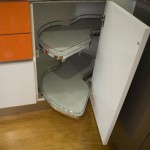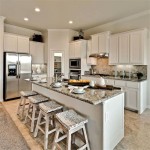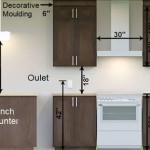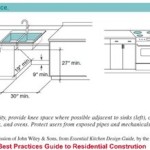Environmentally Friendly Kitchen Cupboards: An Essential Guide
In today's eco-conscious world, incorporating sustainability into our homes has become paramount. The kitchen, a central hub of daily life, presents an excellent opportunity to make environmentally friendly choices. Kitchen cupboards, in particular, play a significant role in both aesthetics and environmental impact. To create a truly sustainable kitchen, consider the following essential aspects when choosing environmentally friendly kitchen cupboards:
1. Material Selection
The materials used in kitchen cupboards have a significant impact on their environmental footprint. Opt for materials that are sustainably sourced, renewable, and low in embodied carbon. Some popular eco-friendly materials include:
- Bamboo: A renewable resource with rapid growth and high durability.
- FSC-certified Wood: Wood from sustainably managed forests ensures responsible forestry practices.
- Recycled Plastic: Made from post-consumer waste, reducing landfill contributions.
- Recycled Aluminum: A highly durable and recyclable metal with a low carbon footprint.
2. Manufacturing Process
Consider the manufacturing process of the cupboards. Look for manufacturers that prioritize energy efficiency, waste reduction, and non-toxic finishes. Sustainable manufacturing practices can significantly reduce the environmental impact of the production process.
3. Finish and Coatings
The finish and coatings applied to kitchen cupboards can release harmful VOCs (volatile organic compounds) into the air. Choose low-VOC or zero-VOC finishes and coatings to minimize indoor air pollution and create a healthier indoor environment.
4. Durability and Longevity
Durable and long-lasting kitchen cupboards reduce the need for frequent replacements, minimizing waste. Invest in high-quality materials and construction techniques to ensure the longevity of your cupboards.
5. Certifications
Seek products with recognized environmental certifications, such as Forest Stewardship Council (FSC), GreenGuard, or BIFMA level. These certifications provide assurance that the product meets specific environmental standards.
6. Energy Efficiency
Energy-efficient kitchen cupboards can contribute to overall home energy savings. Look for designs that incorporate LED lighting or motion-activated sensors to reduce energy consumption.
7. Reusability and Recyclability
Consider the end-of-life options for your kitchen cupboards. Opt for designs that can be easily disassembled and reused. If replacement is necessary, choose materials that can be recycled to minimize landfill waste.
8. Aesthetic Appeal
While focusing on environmental sustainability is essential, it should not come at the expense of aesthetics. Sustainable materials such as bamboo and FSC-certified wood offer a range of visually appealing finishes to complement any kitchen design.
By considering these essential aspects, homeowners can create environmentally friendly kitchen cupboards that enhance both the functionality and sustainability of their homes. Embrace the opportunity to make eco-conscious choices that not only benefit the planet but also contribute to a healthier and more comfortable living environment.

Thomasville Casual Deep Green And Brown Kitchen Cabinets

14 Green Kitchen Cabinet Ideas 2024 Top Paint Colors For Kitchens

Green Lacquer Handleless Kitchen Cabinet Cabinets

8 Eco Friendly Kitchen Cabinet Companies Daybring

Step Inside This Traditional Soft Green Kitchen Beautiful Cabinets

Designing An Eco Friendly Kitchen 101

Modern Color Splash Gorgeously Green Kitchen Cabinets That Usher In Warmer Months Decoist

14 Green Kitchen Cabinet Ideas 2024 Top Paint Colors For Kitchens

How To Introduce Green Into Your Kitchen Smile Kitchens

New This Week 8 Kitchens With Gorgeous Green Cabinets
Related Posts








